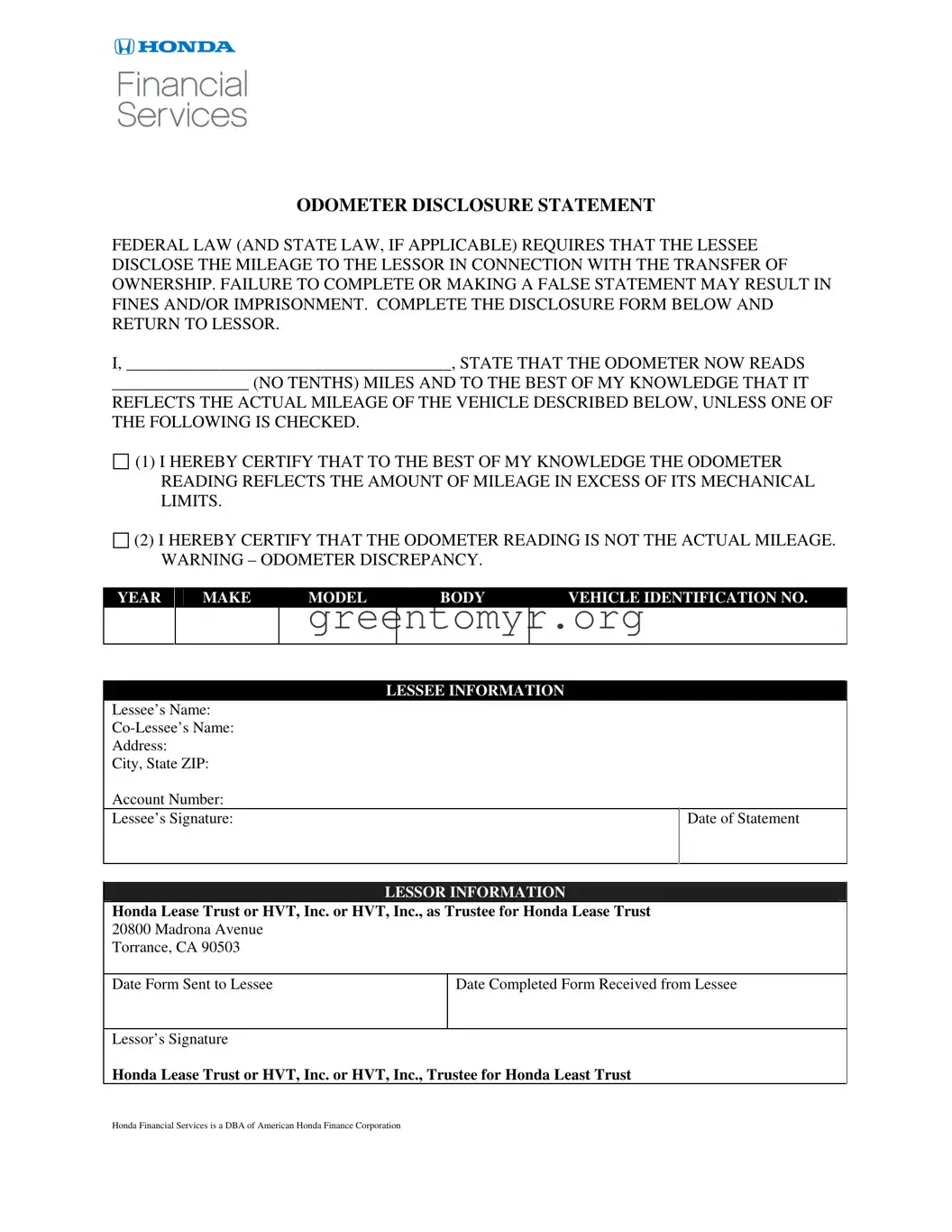Filling out the Honda Odometer Statement form is an important step when transferring vehicle ownership. However, many people make common mistakes that can lead to issues down the line. First and foremost, one of the most frequent errors is neglecting to include the current odometer reading. This is essential information that must be accurately recorded without any tenths. Not providing this detail can trigger delays and complications in the transfer process.
Another mistake involves failing to check one of the discrepancy boxes, if applicable. The form offers specific options to indicate if the odometer reading is accurate, has exceeded its mechanical limits, or isn’t realistic. Choosing to leave these unchecked can raise red flags during processing and could lead to legal troubles. It is crucial to review this section carefully before submission.
Some individuals also overlook the necessity of providing complete contact information. If the lessee's name, address, and other identifying details are not filled out completely, the lessor may struggle to reach them if there are questions or concerns about the disclosure. This simple oversight can result in misunderstandings and unnecessary hassle.
Additionally, the date section is often filled out incorrectly. Some lessees fail to include the date of the statement. Others, while diligent about writing the current date, forget to date the document when they are signing. This can create confusion regarding when the information was provided, complicating the transfer process further.
An equally common issue is related to signatures. Lessees might forget to sign the form or assume that a signature from one party is sufficient when both names are listed. Each party involved must sign to ensure the form is legally binding. If one party doesn’t sign, this can invalidate the entire document, leading to potential delays.
Moving on, individuals frequently make errors in understanding the implications of their certifications. Failing to grasp the significance of stating that the odometer reading is accurate, or that it is not, could result in serious legal consequences. Misrepresentation, whether intentional or not, can lead to fines and even imprisonment.
Another oversight is related to vehicle details. Lessees may miswrite the vehicle’s VIN, year, or model information. These mistakes can cause identification issues down the line, making it difficult to link the odometer statement to the specific vehicle. Always double-check this information against the vehicle title.
Lastly, there are issues with returning the form. People sometimes forget to send it back to the lessor after completing it. The completion of the form does not end the process; timely submission is crucial to avoid delays in ownership transfer.
By being aware of these common mistakes and taking the time to complete the Honda Odometer Statement form carefully, lessees can ensure a smoother and more efficient vehicle transfer process.

